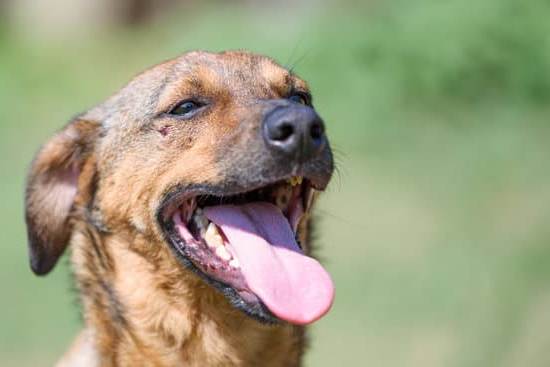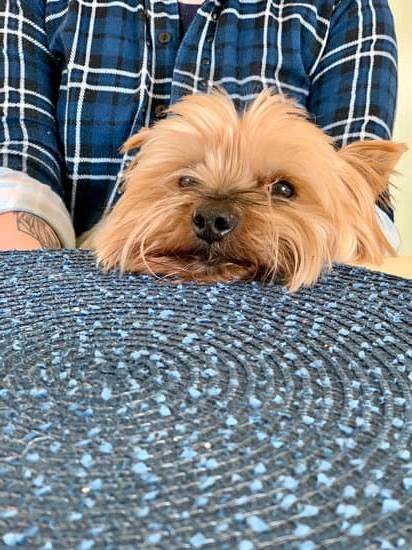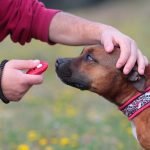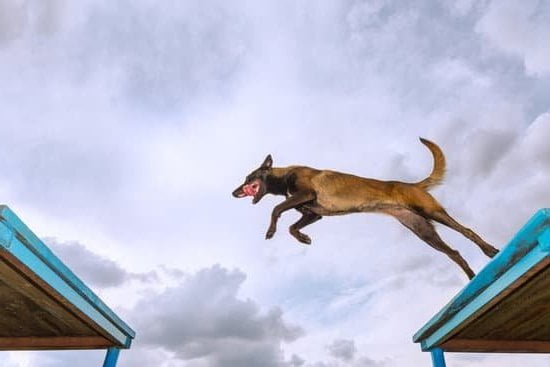Do you have a dog who is food aggressive? In this article, we will explore how to train a dog who is food aggressive by understanding the root causes and triggers of this behavior. Food aggression in dogs can be a serious issue that needs to be addressed with care and patience. By understanding the underlying reasons for food aggression, you can work towards modifying your dog’s behavior and creating a safer environment for everyone involved.
Food aggression in dogs can stem from various factors such as fear, insecurity, past experiences, or even genetic predisposition. It’s important to recognize the signs and symptoms of food aggression in order to address it effectively. Consulting a professional dog trainer or behaviorist may also be necessary to understand the severity of the behavior and develop a personalized training plan for your dog.
Establishing yourself as the pack leader is crucial when dealing with food aggression in dogs. This involves setting clear boundaries and rules, as well as building trust and respect with your dog. Positive reinforcement training techniques can also be utilized to modify your dog’s behavior around food and create a positive association with feeding time. By implementing safe feeding strategies and gradually desensitizing your dog to food, you can work towards managing their food aggression effectively.
Signs and Symptoms of Food Aggression
Food aggression in dogs can manifest in various ways, and it is important for pet owners to be able to recognize the signs and symptoms of this behavior. One common sign of food aggression is growling or snarling when approached while eating. Dogs may also exhibit stiff body language, such as holding their body tense and rigid, or showing their teeth when someone comes near their food. Some dogs may even snap or bite if they feel threatened while eating.
Another indicator of food aggression is the tendency to guard their food or food bowl. This can include staring intently at anyone who approaches, freezing in place with the food bowl, or physically moving their body to shield the food from others. In some cases, a dog may become anxious or stressed when people or other animals are in close proximity to their food, leading to frantic eating or gulping down their food quickly.
If you notice any of these behaviors in your dog, it’s important to address the issue promptly to prevent any potential escalation of aggression. Understanding these signs and symptoms can help pet owners take appropriate steps to modify their dog’s behavior and create a safer environment for everyone involved.
It’s essential for pet owners to understand how to train a dog who is food aggressive responsibly and effectively. By seeking professional guidance and utilizing positive reinforcement training methods, it is possible to modify a dog’s behavior around food and reduce instances of food aggression.
| Signs of Food Aggression | Symptoms of Food Aggression |
|---|---|
| Growling when approached during mealtime | Stiff body language (e.g. holding body tense) |
| Guarding food or food bowl | Anxiety/stress around people/animals during feeding |
| Snapping or biting when feeling threatened | Frantic eating/gulping down food quickly |
Consulting a Professional
If your dog exhibits food aggression, it’s crucial to address the issue as soon as possible. While you may be able to make progress on your own, consulting a professional dog trainer or behaviorist can provide invaluable guidance and support. Here are some instances when it’s best to seek help from a professional:
- When your dog’s food aggression poses a danger to people or other animals
- If your attempts to modify your dog’s behavior have been unsuccessful
- When you feel overwhelmed or unsure about how to effectively address the issue
A professional trainer or behaviorist has the knowledge and experience to evaluate your dog’s behavior, identify the underlying causes of food aggression, and create a customized training plan. They can also offer advice on managing and preventing potential triggers for aggressive behavior.
During your consultation with a professional, they may recommend specific techniques for modifying your dog’s behavior around food, such as desensitization and counterconditioning. They can also provide guidance on establishing leadership and implementing positive reinforcement training.
In addition to addressing food aggression, working with a professional can also improve your overall relationship with your dog and enhance their overall obedience and manners. By seeking help from a qualified expert, you can ensure that you are taking the most effective and safe approach in addressing your dog’s food aggression.
Establishing Leadership
Food aggression in dogs often stems from a lack of clear leadership and dominance within the pack. Dogs are natural pack animals, and they thrive in environments where there is a clear hierarchy. When a dog exhibits food aggression, it may be a sign that they do not see their owner as the pack leader. In order to address food aggression in your dog, it is crucial to establish yourself as the leader of the pack.
Here Are Some Effective Ways to Establish Leadership With Your Dog
- Consistent rules and boundaries: Set clear rules for behavior and stick to them consistently. This helps your dog understand that you are in charge and that there are expectations they must follow.
- Positive reinforcement: Use positive reinforcement techniques to reward good behavior and reinforce your role as the leader. This can include praise, treats, and playtime.
- Training exercises: Engage in regular training exercises with your dog to build trust and reinforce your position as the leader. Basic commands such as sit, stay, and come can be especially helpful.
Positive Reinforcement Training
One way to implement positive reinforcement training is by using treats or favorite toys as rewards. For example, if your dog remains calm and non-aggressive during feeding time, you can offer them a treat or engage in playtime as a form of positive reinforcement. The key is to consistently reward the desired behavior, creating a strong association between good conduct and positive outcomes.
Another important aspect of positive reinforcement training is timing. It’s crucial to deliver the reward immediately after your dog displays the desired behavior. This helps them make a clear connection between their actions and the reward they receive. By consistently rewarding your dog for exhibiting non-aggressive behavior around food, you can gradually modify their response and reduce food aggression.
In addition to using treats and toys as rewards, verbal praise and physical affection can also be powerful forms of positive reinforcement. When your dog behaves calmly around food, be sure to provide verbal praise such as “good boy” or “good girl” and offer physical affection like petting and gentle strokes.
This positive feedback can further reinforce the desired behavior and contribute to reducing food aggression in your dog. Overall, positive reinforcement training can have a significant impact on addressing food aggression in dogs and improving their behavior around mealtime.
Feeding Strategies
Mealtime Routine
One effective feeding strategy for food aggressive dogs is to establish a consistent mealtime routine. This means feeding your dog at the same time each day and in the same location. By creating a predictable routine, you are helping your dog feel more secure and less anxious about mealtime, which can reduce food aggression.
Hand Feeding
For dogs who exhibit food aggression, hand feeding can be a useful technique. This involves feeding your dog directly from your hand, allowing them to associate you with something positive and reinforcing a bond of trust. Hand feeding also gives you control over the food, which can help manage their behavior around mealtime.
Use of Puzzle Feeders
Puzzle feeders are interactive toys or devices that dispense food as the dog plays with or manipulates them. These tools provide mental stimulation and slow down the eating process, preventing the dog from quickly consuming their food and becoming territorial or aggressive. Puzzle feeders can also redirect their focus away from any perceived threat to their food.
Implementing Safe and Effective Feeding Strategies
When dealing with food aggressive dogs, it’s important to remember that safety is paramount. Always approach the situation with caution and take necessary precautions to avoid potential conflicts. By utilizing these feeding strategies along with positive reinforcement training, you can gradually modify your dog’s behavior around food and create a safe environment for everyone involved.
Desensitization and Counterconditioning
Understanding Desensitization
Desensitization involves exposing your dog to the trigger of their aggression in a controlled and safe environment. This exposure should be done at a level that is below the threshold where the dog reacts aggressively. For example, if your dog shows aggression when someone approaches their food bowl, start by having people walk by at a distance while your dog is eating.
Counterconditioning Through Positive Reinforcement
Counterconditioning involves changing your dog’s emotional response to the trigger by associating it with something positive. Every time the trigger occurs, you can give your dog a high-value treat or engage them in a favorite activity. This helps them form a positive association with the trigger, gradually reducing their aggressive behavior.
Patience and Consistency
Desensitization and counterconditioning require patience and consistency. It’s important to progress at your dog’s pace and not push them too quickly into situations that may provoke aggression. With consistent training sessions and positive reinforcement, you can help your food-aggressive dog learn new, non-aggressive behaviors around mealtimes.
By implementing desensitization and counterconditioning techniques, along with positive reinforcement training, you can effectively modify your food-aggressive dog’s behavior over time. Remember to consult with a professional trainer or behaviorist if needed for guidance on how to train a dog who is food aggressive safely and effectively.
Maintaining a Safe Environment
In conclusion, addressing food aggression in dogs requires patience, consistency, and understanding. It is crucial to recognize the signs and symptoms of food aggression in order to address the root causes and triggers. Consulting a professional dog trainer or behaviorist may be necessary in severe cases of food aggression, as they can provide guidance and support in implementing effective training techniques.
Establishing leadership within your pack is essential for managing food aggression in dogs. By using positive reinforcement training and rewards, you can modify your dog’s behavior around food by creating a positive association. Implementing safe feeding strategies and maintaining a safe environment are also key components in managing food aggression.
Desensitization and counterconditioning techniques can be used to gradually desensitize your dog to food and modify their behavior. These methods should be practiced consistently and under the guidance of a professional to ensure safety for both your dog and those around them. By following these tips and techniques, you can effectively train a dog who is food aggressive and create a safe environment for all involved.
Frequently Asked Questions
Can Dogs Be Trained Out of Food Aggression?
Yes, dogs can be trained out of food aggression through consistent and positive reinforcement training. It’s important to work with a professional trainer to address the underlying causes of the aggression and modify the behavior.
How Do I Stop My Dog From Being Food Aggressive?
To stop a dog from being food aggressive, it’s essential to establish yourself as the leader and set clear boundaries around mealtimes. This may involve implementing feeding routines, using desensitization techniques, and teaching the “leave it” command.
Can Food Aggression in Dogs Be Cured?
Food aggression in dogs can be cured with patience, consistency, and proper training. Working with a professional trainer can help identify the triggers and develop a customized behavior modification plan to address the aggression effectively.

Welcome to the blog! I am a professional dog trainer and have been working with dogs for many years. In this blog, I will be discussing various topics related to dog training, including tips, tricks, and advice. I hope you find this information helpful and informative. Thanks for reading!





